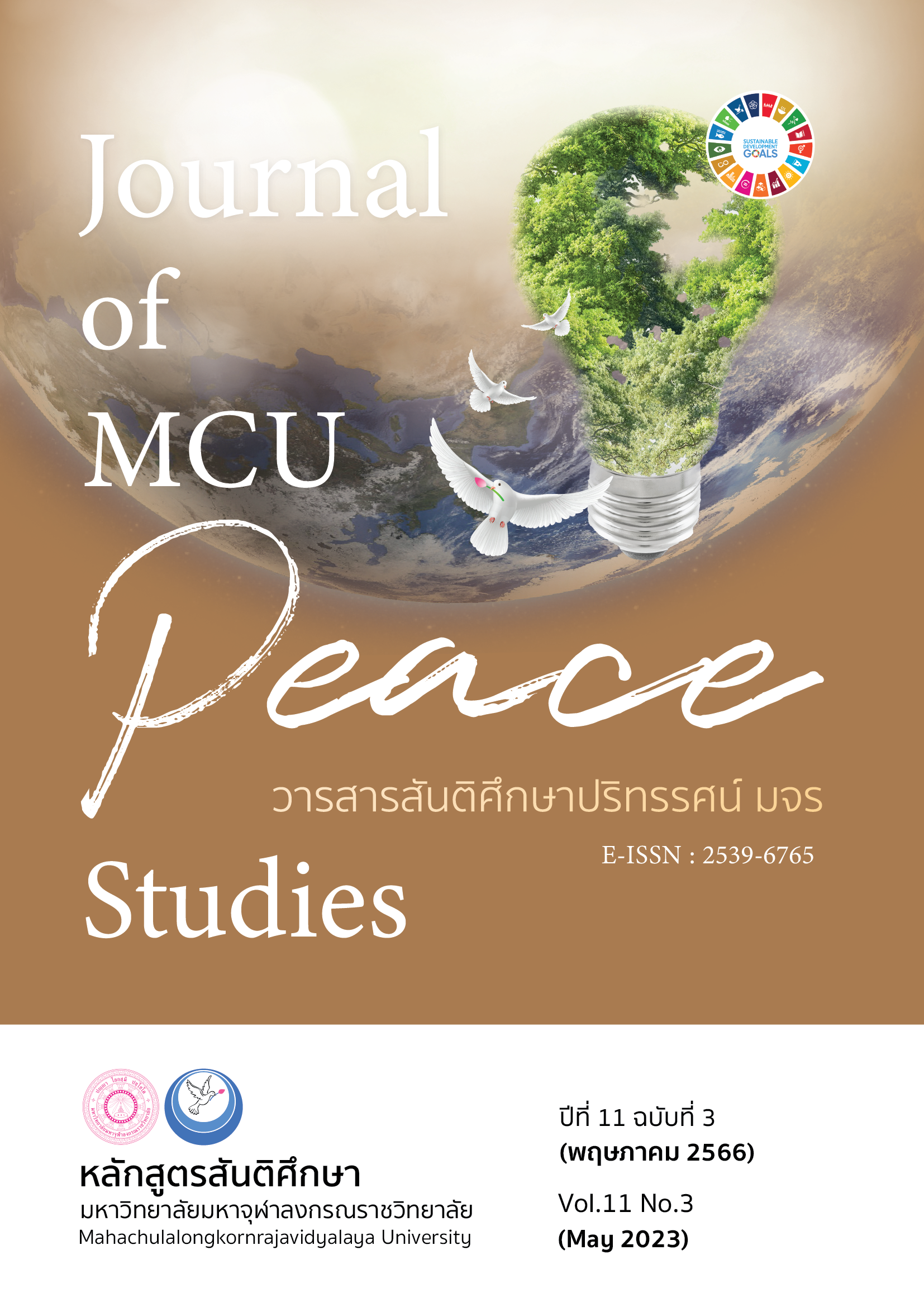Auditory Perception Modes and Effects on Meditation: Case Study of Thai Cooking Sounds
Main Article Content
บทคัดย่อ
Meditation is a method that effectively helps relieve stress. However, a distracted mind can hinder the meditation practice. Therefore, sounds play a significant role in human behavior, and each individual’s perception can create different feelings or environments. So far, there are no fixed rules or guidelines on such creations or sound selection to support meditation. With this in mind, the aim of this research is 1) to study the significance of sound in meditation, 2) to analyze the factors of sound in meditation, 3) to present efficient sound modes for meditation using the components of Thai cooking sounds case study, and 4) to provide efficient meditation sound modes for testing and qualitative assessment by collecting data of the Top Ten Thai food as ranked by BBC Good Food.
The research findings revealed: 1) Auditory perception modes during meditation differed from regular auditory perception, which is primarily supported by visual data. During meditation, practitioners close their eyes to eliminate data or stimuli; however, auditory data cannot be completely eliminated. 2) Sounds also aid meditators in visualizing more easily, making them a key factor in meditation. 3) Regarding efficient sound modes for meditation, the analysis of twenty sound samples showed that the most effective ones contain speeds or rhythms between 50 - 60 bpm, with keynote sound components below 200hz. It is advisable to avoid sound bandwidths between 300 – 1000 Hz, as sounds in this range are well perceived and can stimulate complex data processing and thinking, which should be essentially avoided. 4) The effects of the sound modes which were tested sound components of Thai cooking, and qualitative assessment through sample tests confirmed that these sounds can be used and support meditation.
Article Details

อนุญาตภายใต้เงื่อนไข Creative Commons Attribution-NonCommercial-NoDerivatives 4.0 International License.
ทัศนะและความคิดเห็นที่ปรากฏในบทความในวารสาร ถือเป็นความรับผิดชอบของผู้เขียนบทความนั้น และไม่ถือเป็นทัศนะและความรับผิดชอบของกองบรรณาธิการ ยินยอมว่าบทความเป็นลิขสิทธิ์ของวารสาร
เอกสารอ้างอิง
Arnheim, R. (1969). Visual Thinking. Berkeley: University of California Press.
Emmerson, S. (1986). The Language Electroacoustic Music. London: Palgrave Macmillan Limited.
Gibbs, T. (2007). The Fundamentals of Sonic Art & Sound Design. Lausanne: AVA Academia.
Gibson, J. J. (1987). The Ecological Approach to Visual Perception. New York: Psychology Press.
Kemper, K. J. et al. (2015). Are Mindfulness & Self-Compassion Associated with Sleep & Resilience In Health Professionals? The Journal of Alternative & Complementary Medicine, 21(8), 496-503.
LaBelle, B. (2015). Background Noise: Perspectives on Sound Art. (2nd ed). London: Bloomsbury Academic.
Leeds, J. (2010). The Power of Sound. Rochester, Vt.: Healing Arts Press.
Moore, A. (2016). Sonic Art. (1st ed.). New York: Routledge.
Mount, A. (2010). Laughter Over Tears: John Cage, Experimental Art Music, And Popular Television. Andre Mount Researchblog. Retrieved June 2, 2020, from http://researchblog.andremount.net/?p=505]
Onge, D. S. (2017). The Better-Than-Takeout Thai Cookbook: Favourite Thai Food Recipes Made at Home. Berkeley, CA: Rockridge Press.
Schafer, R. (2011). The Soundscape: Our Sonic Environment and the Tuning of the World. Rochester, Vt.: Destiny Books, Features of the Soundscape.
Southworth, M. (1969). The Sonic Environment of Cities. Environment and Behavior, 1(1), 19-22.
Wongpiromsarn, Y. (2016). Mindfulness-based Therapy & Counseling (MBTC) Manual. Bangkok: Beyong Publishing Co., Ltd.


